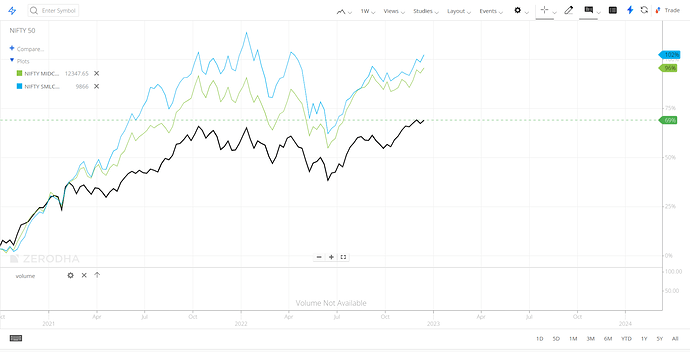In the last 2-3 years, there was a mania around IPOs. A lot of people thought of them as guaranteed moneymakers. The news headlines of IPOs going up 100–200% are enough to induce greed. But do IPOs “always” make money?
We analysed IPOs that had an issue size of Rs 1000Cr+ in the last 3 years. Here’s what we found
If you invested in stocks during IPOs and held on them, you’d be losing a ton of money right now. Clearing buying and holding IPO companies is a terrible idea.
| Returns from Issue price | ||
|---|---|---|
| Particulars | Number of Stocks | % |
| Negative returns | 19 | 42.22% |
| 0-10% | 1 | 2.22% |
| 10-15% | 3 | 6.67% |
| 15-25% | 2 | 4.44% |
| >25% | 20 | 44.44% |
| Total | 45 | 100.00% |
It’s the same when you consider the listing price too.
| Returns from listing price | ||
|---|---|---|
| Particulars | Number of Stocks | % |
| Negative returns | 22 | 48.89% |
| 0-10% | 4 | 8.89% |
| 10-15% | 3 | 6.67% |
| 15-25% | 1 | 2.22% |
| >25% | 15 | 33.33% |
| Total | 45 | 100.00% |
Shockingly, not all IPOs had listing gains. 55% of all IPOs had negative or less than 10% of listing gains.
| Listing Gains | ||
|---|---|---|
| Particulars | Number of Stocks | % |
| Negative returns | 16 | 35.56% |
| 0-10% | 9 | 20.00% |
| 10-15% | 4 | 8.89% |
| 15-25% | 7 | 15.56% |
| >25% | 9 | 20.00% |
| Total | 45 | 100.00% |
Stories will always lead you astray. It’s important to look at the data when making investment decisions. This reminds of a podcast of Professor Sanjay Bakshi in which he spoke about the same thing:
One of the great lessons from studying history is to do with “base rates”. “Base rate” is a technical term of describing odds in terms of prior probabilities. The base rate of having a drunken-driving accident is higher than those of having accidents in a sober state.
So, what’s the base rate of investing in IPOs? When you buy a stock in an IPO, and if you flip it, you make money if it’s a hot IPO. If it’s not a hot IPO, you lose money. But what’s the base rate – the averaged out experience – the prior probability of the activity of subscribing for IPOs – in the long run?
If you do that calculation, you’ll find that the base rate of IPO investing (in fact, it’s not even investing … it’s speculating) sucks! [T]hat’s the case, not just in India, but in every market, in different time periods.
A better alternative to picking IPOs would’ve been just to invest in low-cost broad market index funds and move on with your life:
You can access the IPO data here ![]()
